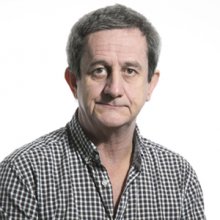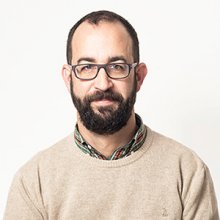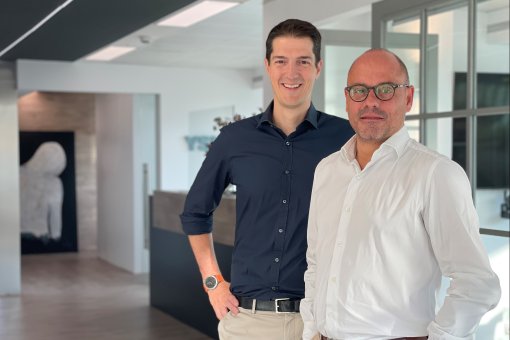Images
Participants


Contact

In the conference “Drosophila as a model in cancer”, to be held from 15 to 17 June in Barcelona, IRB Barcelona and the BBVA Foundation bring together a select group of leading scientists that use the fruit fly for cancer research.
This fly can be used to study specific types of tumour, ranging from leukaemia to brain tumours, and complex processes such as metastasis or the wasting syndrome (extreme muscle weakness) associated with cancer. In addition, Drosophila has proved to be an excellent tool for drug screening in vivo.
Nobert Perrimon is among the invited speakers. From his lab at Harvard, he has performed one of the largest screenings of molecules in flies in search of new anti-tumour applications of drugs that have already been approved by the FDA.
Special mention is also given to the participation of Sam Jackson, from the National Center for the Replacement, Refinement and Reduction of Animals in Research, a British organisation that promotes and supports the use of invertebrate models, such as Drosophila, for cancer research.
For decades, model organisms in biomedical research, such as the fly Drosophila melanogaster, have allowed the first observations of the mechanisms of action of proteins related to human cancer. “Many of the relevant genes in cancer were first discovered in Drosophila,” explains Marco Milán, ICREA researcher at the Institute for Research in Biomedicine (IRB Barcelona), who, together with Cayetano González, also an ICREA researcher at the same centre, has selected 23 scientists to participate in the Barcelona Biomed Conference entitled “Drosophila as a model in cancer”—an event supported by the BBVA Foundation.
Held from 15 to 17 June at the Institut d’Estudis Catalans (IEC), in Barcelona, the event will involve the participation of 150 scientists and the attendance of reference scientific journals such as Nature Genetics, Nature Protocols and Embo Reports.
Cancer in flies. The main lines of current research
1. Drosophila to study specific types of human tumours. Flies can be generated to reproduce intestinal, epithelial, hematopoietic and brain tumours, which behave in a similar manner to analogous human cancers. Using Drosophila, Dr. Tin-Tin Su’s lab, at the University of Colorado, have identified anti-tumour compounds that are applicable to tumours that are treated exclusively with radiotherapy, thus increasing the efficacy of the treatment and reducing side-effects.
2. Drosophila to study cancer biology in depth. Using the fly, scientists can study tumour stem cells, metastases –spread of a tumour to other organs -, cachexia –or the associated loss of muscle mass, which is the third cause of death by cancer -, the role of the immune system in cancer development, cancer-associated inflammation, cancer metabolism, and the relationship between diabetes and cancer.
3. Drosophila to screen anti-tumour drugs. The fly has proved to be a valuable system in which to test anti-tumour compounds in vivo. The reproduction of tumours analogous to those present in humans provides an excellent tool through which to assay combinations of drugs that shrink the tumour or lengthen the fly’s lifespan. In 2014, using intestinal tumour models in D. melanogaster, Norbert Perrimon’s lab, at Harvard, performed one of the largest screenings of FDA-approved molecules, in search of new anti-tumour applications. This and other screenings in flies have led to the identification of hundreds of molecules whose use in vertebrates is being explored.
4. Personalised cancer therapy. In 2013, Ross Cagan, together with two other scientists, set up the the Center for Personalized Cancer Therapeutics, associated with the Mount Sinai Hospital, where they reproduce patient tumours in flies. They are currently recruiting patients with colon cancer and thyroid cancer for an experimental clinical study. The process consists of identifying the mutated genes that promote the tumours in a given patient and generating flies that express the main mutations of this tumour. There is a double objective, namely to explore the extent to which the degree of complexity of a human tumour can be reproduced in the fly and to provide possible treatments for the patients.
The following scientists attending the Barcelona Biomed Conference “Drosophila as a model in cancer” will be available for interviews:
Cayetano González. Co-organiser of the conference. ICREA research professor at IRB Barcelona and head of the Cell Division Laboratory. Holder of an ERC Advanced Grant for the project “FliesCan”. His research focuses on tumour growth using brain tumour development in D. melanogaster as a model.
Marco Milán. Co-organiser of the conference. ICREA research professor at IRB Barcelona and coordinator of the Cell and Development Biology Programme. He studies tumour growth using epithelial tumour growth in D. melanogaster as a model.
Norbert Perrimon, from the Harvard Medical School, and David Bilder, from the University of California. They use the fly to model cachexia associated with cancer. In two independent studies published in Developmental Cell in April, these scientists reported on the discovery of a molecule that causes the fat loss and muscle degeneration in various fly tumour models. Cachexia, which has received little attention, is responsible for a third of the deaths of patients with advanced stage cancer and the cause of the low effectiveness of chemotherapy.
Samuel Jackson, from the National Center for the Replacement and Reduction of Animals (NC3R) in Research, UK. He will give a talk entitled “The 3R in oncology: pioneering better science”. His work on NC3Rs is based on the replacement and refinement of animal models in order to reduce the use of animal experimentation in labs in the pharmaceutical industry and academic sector. This organisation recognises the merit of innovation and the development of projects involving cells in vitro or in invertebrate models such as D. melanogaster.
Tin-Tin Su, research professor at the University of Colorado. She uses fruit flies to study the effects of radiotherapy and to look for ways to improve this therapy, in order to achieve more selective removal of tumour cells. She also uses the fly to screen anti-tumour compounds.
Laura A. Johnston, from the Columbia University Medical Center, studies cell competition, a process by which healthier cells eliminate weaker ones. Furthermore, cell competition has a role in tumor suppression. In an article published in 2014 in Science it revealed that the innate immune system of D. melanogaster is also related to cell competition. Thus, the study of Johnston opens new scenarios to explore whether the innate immune system would be valid for suppressing tumors at early stages.
Uptal Barnejee, from the University of California, focuses on cancer and metabolism. He uses flies to study the modulation of certain metabolic pathways in order to prevent tumour growth without damaging healthy tissues.
Ross Cagan is a research professor at the Icahn School of Medicine at Mount Sinai (NY, US), and director of the Center for Personalized Cancer Therapeutics, where they develop flies that reproduce tumours taken from patients. His lab work has allowed the validation of vandetanib, the first drug to receive FDA approval in 2011, for the treatment of patients with Medullary Thyroid Carcinoma.
The full programme of “Drosophila as a model in cancer” is available here
About IRB Barcelona
The Institute for Research in Biomedicine (IRB Barcelona) pursues a society free of disease. To this end, it conducts multidisciplinary research of excellence to cure cancer and other diseases linked to ageing. It establishes technology transfer agreements with the pharmaceutical industry and major hospitals to bring research results closer to society, and organises a range of science outreach activities to engage the public in an open dialogue. IRB Barcelona is an international centre that hosts 400 researchers and more than 30 nationalities. Recognised as a Severo Ochoa Centre of Excellence since 2011, IRB Barcelona is a CERCA centre and member of the Barcelona Institute of Science and Technology (BIST).






